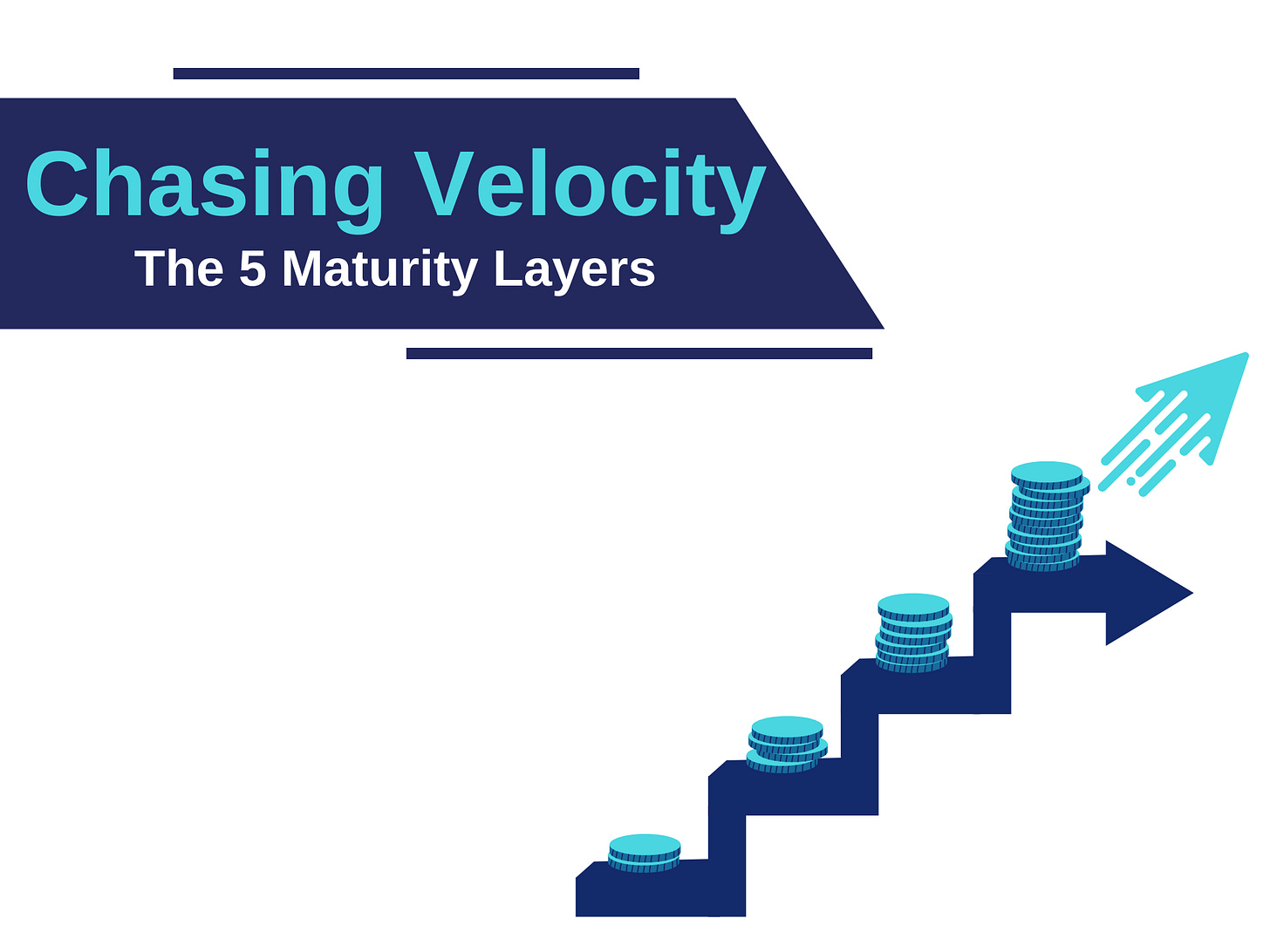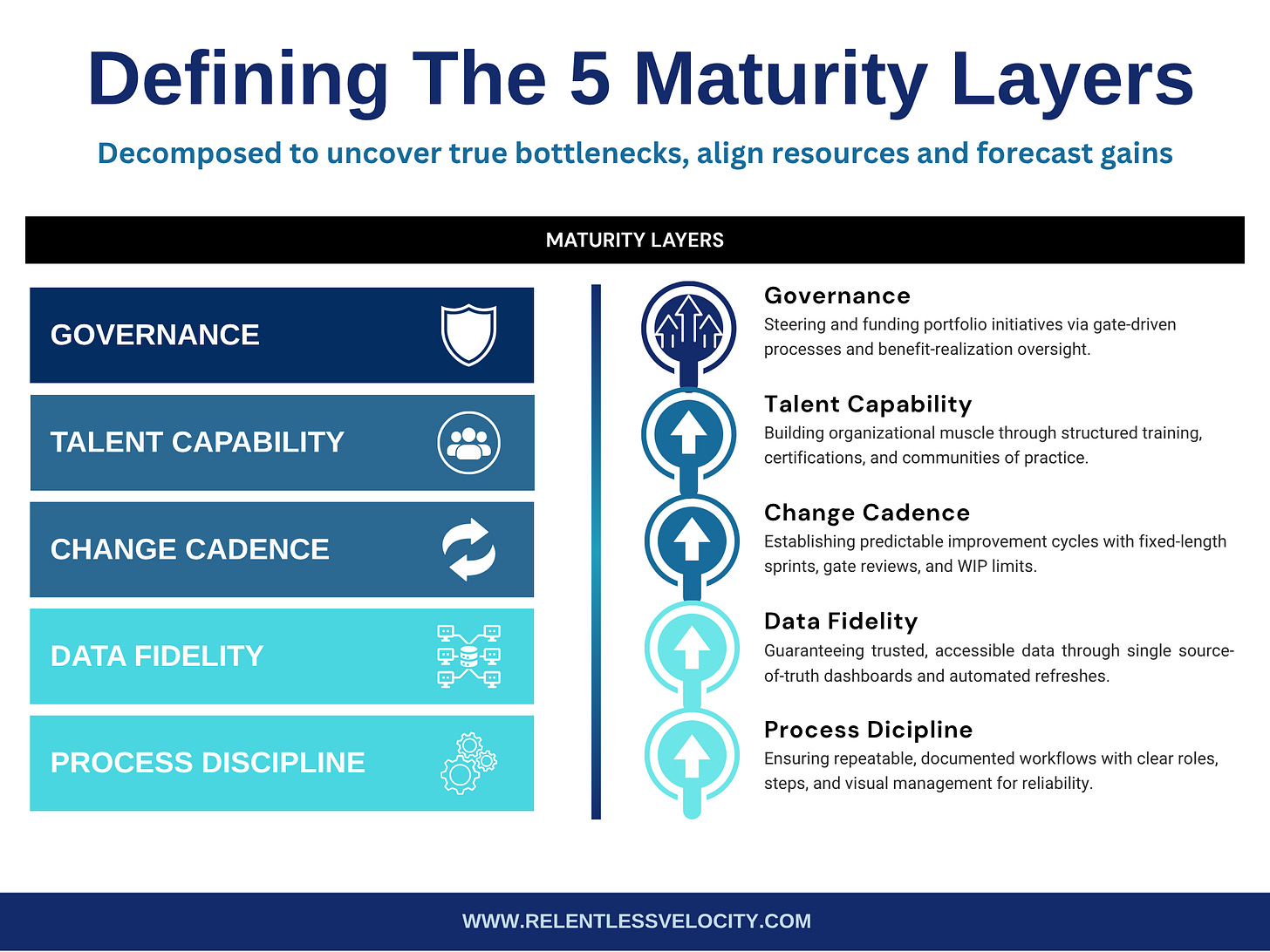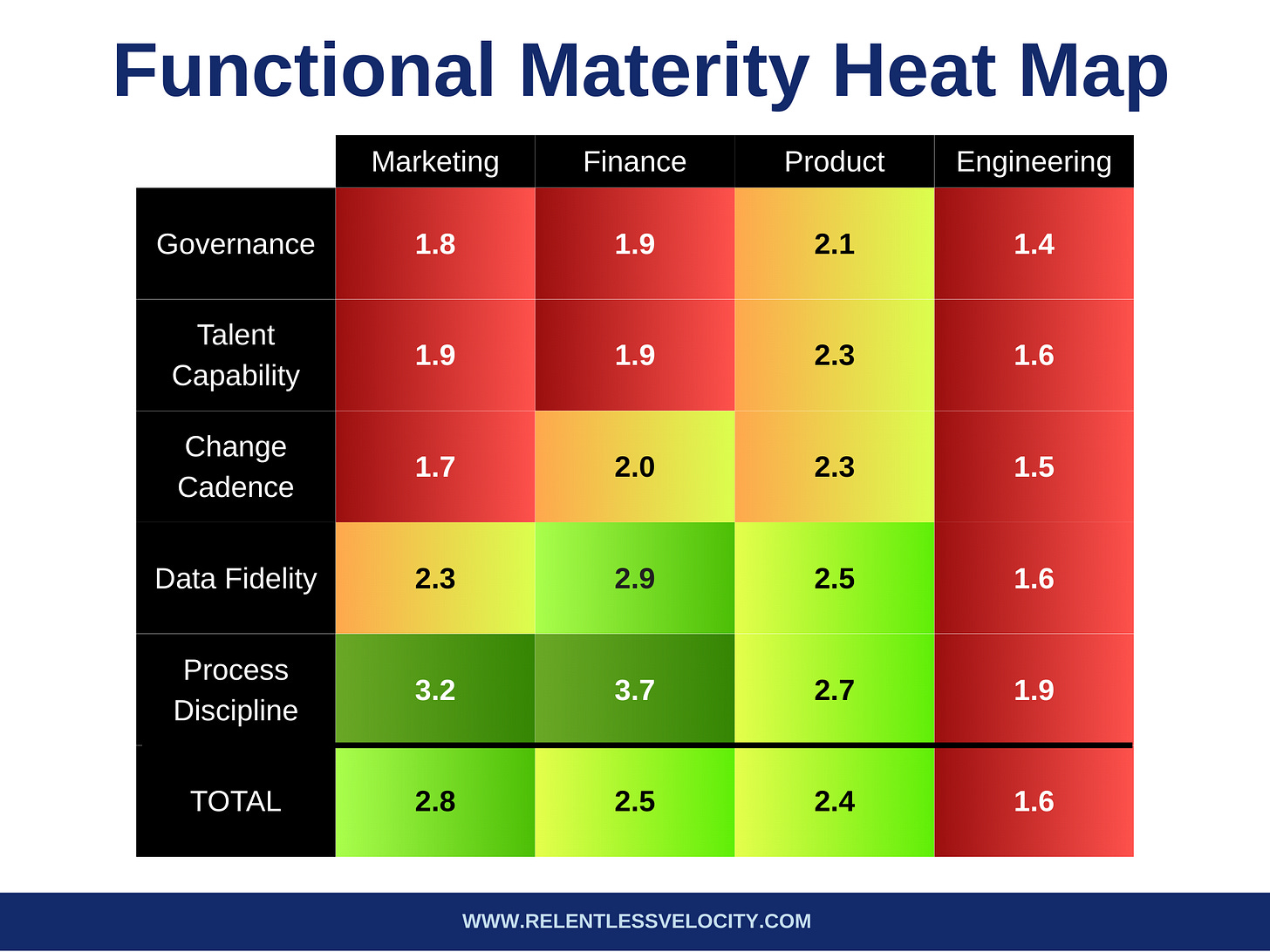If you’ve been following the news or had any hands on experience with large language models lately, you’ve probably realized just how powerful and agile they’ve become. It feels like yesterday these models couldn’t code or reason properly. In fact, it pretty much was just yesterday when you think about it. If you’re like me, you can’t help but wonder what this alien-like technology will be capable of tomorrow, next week, or a few months from now. What possibilities will open up for our organizations in the future, even if that future means tomorrow?
The business landscape is evolving at breakneck speed thanks to these disruptions, and those that stay static are in for a rough time. Riding the wave of change is the natural and more desirable approach, but as operators, we must be careful where we steer the ship. “Moving fast” must mean more than simply shipping software or launching marketing campaigns; it should centre around building an organization that learns, adapts, and self-corrects in real time.
In order to be all those things, we must first ensure our collection of processes that make up our business are stable, refined, and scalable. In other words, we need to raise the operational maturity of everything we do across the value chain to keep pace with change. After scrutinizing current models and the way most businesses view this practice, I’m convinced that existing opportunity models need a new framework. One that’s dynamic, rigorously focused, and precisely timed to deliver true, future-proofed value.
With my recent focus on raising operational maturity, I’ve spent many months building a layered model within my broader Maturity to Velocity framework to address this challenge. Specifically, this model reframes operational excellence by defining five core, decoupled maturity layers that enable real focus while providing a clear progression when assessing what our processes can achieve. I define these layers as Process Discipline, Data Fidelity, Change Cadence, Talent Capability, and Governance. For each layer, the goal is to reach its highest stage of capability, highlighted below:
Stage 1: Ad-hoc
Stage 2: Defined
Stage 3: Optimized
Stage 4: Predictive
Stage 5: Autonomous
My assumption is that as each layer ascends from reactive, manual workflows toward self-healing autonomy powered by AI, organizations unlock dramatic leaps in velocity. Ones that are measured by the KPIs that matter, such as cycle time, time-to-revenue, and revenue per FTE. What makes this so powerful is its dynamism: you can start by applying the model at the individual process level to prove value, and once verified, extend it to teams, functions, and ultimately the entire enterprise.
This article explores each layer’s maturity journey and shows how Stage 5 transforms your processes into continuously learning, AI-driven systems.
Why “Layers” Matter
It’s very easy to treat any form of process improvement as a one size fits all practice. We want to go from “decent” to “better” as quickly as possible to keep up with the competition and the world itself. I’ve instead, focused on taking the very long-term view of what “better” entails. In my M2V framework, every process, team, and function is decomposed into very broad categories (what I call layers) so everything is compared with a common set of tools.
Each layer represents a specific component of a process and drives only a small set of business metrics. This allows the OpEx professional to build (or rebuild) a process from the ground up in incremental steps and to directly measure the performance of those steps using the KPIs that matter.
The best way to define each layer is to view it in terms of the question it’s trying to solve:
Process Discipline: Can we execute reliably without firefighting?
Data Fidelity: Can we trust and access the right data in one click?
Change Cadence: How rapidly can we improve and deploy?
Talent Capability: Do our people have the skills and bench strength?
Governance: Are we steering to strategy and capturing synergies?
By scoring each layer independently, you expose your true bottlenecks, align resources against dimensions of the process that are the weakest, and will be able to forecast which KPIs will improve as a result. Most importantly, each layer matures through the same five-stage arc, resulting in an AI-enabled, autonomous future.
Just to emphasize as much as possible, you should really focus on the lowest maturity layers first, building your way up and taking on no more than two at a time. For example, it’s better to concentrate on increasing the maturity of Process Discipline and Data Fidelity if they scored low before optimizing the other layers. As they say, you can’t optimize a broken process.
As a small teaser, I’ll be creating an article in the future on how to properly assess the five layers and effectively score them, making it easy to identify weak points. For a visual hint, you can preview the heat map we use to visualize the layers and their scores near the bottom of this article.
Now, let’s take some time to flesh out each maturity layer, why it fits in the framework, what stage 5 looks like for that layer, and finally what you should examine if you score poorly on any of them.
Layer 1: Process Discipline
Layer Definition
The foundational layer that everything builds off of. Process Discipline is the degree to which your teams follow repeatable, documented workflows, including clear roles, inputs, outputs and hand-off criteria. The aim is that every critical activity executes predictably rather than relying on the memory that lives in our minds.
Why It Matters
When processes live in people’s heads or on sticky notes, firefighting becomes the norm. Inconsistent hand-offs, unauthorized workarounds and missing approvals introduce waste, increase error rates and slow everything downstream. Most issues and missed SLA’s are the result of poor process discipline.
What Stage 5 Looks Like
At Autonomous maturity, processes self-heal. An AI orchestration layer detects deviations such as a surge in missed SLA targets, then automatically reroutes work, escalates exceptions, triggers corrective bots and updates SOPs. All of this in real time and without human intervention.
Where To Focus For Lower Maturity
Capture Tribal Knowledge: Start by documenting every critical path and decision point. Build SOPs and escalation paths based on your findings
Enforce Consistency: Train teams on these SOPs, then audit compliance with lightweight checklists.
Monitor Key Metrics: Build your core list of KPIs (3 maximum) in dashboards to spot trouble early.
Automate Remediation: Introduce simple RPA flows around the most error-prone steps, feeding back into your process maps.
Layer 2: Data Fidelity
Layer Definition
Data Fidelity is your ability to collect, store and deliver accurate, complete and timely data AND make it available in one click dashboards. Ultimately, the goal is for decisions to rest on a single, trusted source.
Why It Matters
Even the best playbook fails if the underlying data is wrong or siloed. Disconnected spreadsheets, manual reconciliations and conflicting reports do nothing but erode confidence and blind you to real performance.
What Stage 5 Looks Like
In an Autonomous state, data pipelines self-repair. AI powered services detect drift, fill in missing values and continuously tune ingestion logic. Ideally all this happens without manual interventions.
Where To Focus For Lower Maturity
Centralize Your Data: Consolidate your critical data into a single, governed repository whether that’s a centralized spreadsheet or, ideally, a formal data warehouse. Ensure every dataset has a clear owner and follows standardized naming conventions.
Automate Ingestion: Replace manual exports with scheduled ETL jobs that include tracking and freshness SLAs. If you’re just getting started, no-code tools like Zapier make it easy to pull updates from JIRA, Salesforce and other sources directly into a single, unified spreadsheet.
Surface Quality Alerts: Deploy basic anomaly detection rules to flag duplicate records or sudden drops in completeness.
Plan for Enrichment: Lay the groundwork for context-aware fills (i.e. lookups, reference data) so you can later layer on AI-driven corrections.
Layer 3: Change Cadence
Layer Definition
Change Cadence measures how quickly and consistently your team, function or company can plan, execute and embed improvements. The idea is to move away from sporadic initiatives and towards a relentless, predictable sprint rhythm.
Why It Matters
Projects that stretch beyond a quarter lose focus, momentum and stakeholder support. Without a disciplined sprint cadence, improvements become one-off events rather than a continuous drive toward higher velocity.
What Stage 5 Looks Like
In the Autonomous stage, an intelligent engine autonomously schedules, prioritizes, and even executes code or configuration changes. It continuously recalibrates sprint scope in response to real-time capacity, risk indicators, and shifting business priorities, powering a seamless 24/7 delivery of feature and process enhancements.
Where To Focus For Lower Maturity
Set a Sprint Rhythm: Lock in a consistent sprint duration (we’re testing 90 days) using a tried and true OpEx framework. Ours right now takes components of Agile, Lean, Six Sigma, and Management Consulting to create the perfect picture for us. Each sprint should have clear entry and exit gates to create predictable delivery points.
Limit Work in Progress: Use Kanban or Scrum boards with capacity limits and to surface bottlenecks fast.
Forecast Resources: Introduce basic capacity planning models so you don’t overcommit.
Automate Deployments: Begin with simple continuous improvement pipelines, paving the way for AI-enabled, autonomous release orchestration.
Layer 4: Talent Capability
Layer Definition
Talent Capability reflects the skills, strength and mindset of your people and their ability to apply the right tools when needed. Effective talent is able to interpret data and drive continuous improvement in the areas of focus.
Why It Matters
Without capable teams, processes and data platforms leave performance on the table. Whats more, under trained or disengaged staff slow adoption, introduce errors and fail to sustain change.
What Stage 5 Looks Like
In an Autonomous environment, AI coaches deliver micro-learning at the point of need, virtual mentors guide decision making in real time and personalized development plans adapt on the fly based on performance history.
Where To Focus For Lower Maturity
Define Competencies: Map required skills to roles and align them with easily accessible training modules.
Launch Certifications: Introduce learning curriculums and peer mentoring to spread fluency of operational excellence. Start small and scale where needed.
Identify Gaps: Use basic analytics to spot where performance falls short and assign targeted e-learning.
Pilot Automation: Start with a simple recommendation engine to serve quick tips and best-practice prompts.
Layer 5: Governance
Layer Definition
Governance ensures your OpEx efforts align to strategy, deliver intended benefits and maintain executive oversight. Tangible tools could be structured steering meetings, clear charters and transparent ROI tracking.
Why It Matters
Successful process improvements will most likely drift off course without ongoing oversight. Poor governance leads to orphaned projects, wasted budgets and misaligned priorities.
What Stage 5 Looks Like
At full autonomy, a governance engine powered by AI continuously monitors portfolio performance, flags projects that deviate from strategic targets, rebalances resources in real time and even enforces budget rules.
Where To Focus For Lower Maturity
Formalize Gate Reviews: Establish Gate 0/1/2 meetings and steering committee cadences with clear decision criteria. Make them lean so speed is never sacrificed throughout the journey.
Track Benefits: Build simple dashboards linking maturity lifts to financial and operational KPIs.
Scenario Plan: Run basic “forecast vs. actual” variance analyses to spot emerging issues.
Enable Smart Rules: Lay the groundwork for triggers and guardrails so you can later automate portfolio adjustments.
From Defined to Autonomous: The AI-Powered Future
From what I’ve been seeing, I now strongly believe the shift from humans to machines is where most areas of work are headed. The only real question in my head is whether this is a five year shift or something ten+ years away.
Focusing on maturing every key process in the value chain on their way to Stage 5 is one of the biggest opportunities available to companies today. At Stage 5, each layer transcends manual controls and human intervention, becoming an intelligent, self-healing ecosystem:
Processes anticipate and resolve exceptions before they impact customers.
Data pipelines detect drift, enrich themselves, and correct anomalies in flight.
Change flows adapt in real time to shifting priorities and capacity signals.
Talent receives on-the-fly coaching, micro-learning, and performance nudges.
Governance dynamically rebalances portfolios to maximize ROI and strategic alignment.
Together, these autonomous layers form an organizational nervous system. One that constantly senses, analyzes, and acts on operational signals to sustain “true velocity”. And as you can imagine, the companies that make it to stage 5 first will be the global leaders in the future. I don’t even want to think of those stuck at the bottom stages for the long term…
Chasing Velocity: Your Next Steps
So where do you go from here? To kick start your journey to true velocity, follow these five focused actions. While each requires an initial investment of time, the rapid gains you’ll unlock make it more than worthwhile:
Baseline Your Maturity: Craft a 20 question survey (four questions per layer) and have your core team (even yourself) complete it. You can target a single process or assess your entire function to establish a clear starting point. Don’t worry, I’ll talk more about this in a future article.
Select High Impact KPIs: Identify the handful of metrics where your team or process can move the needle the most and that matter strategically to the business. These become the focal points for your sprint.
Pinpoint Your Two Lowest Layers: Visualize your survey results (as mentioned above, we use a heat map) and flag any layers scoring the lowest. Choose the two weakest dimensions as the levers you’ll lift first.
Run a 90 Day Sprint: Execute your improvement effort in three gates: first define the problem and secure approval at Gate 0, then validate and refine solutions through Gate 1, and finally measure against your KPIs and lock in gains at Gate 2. After Gate 1 approval, the expectation is to flow into rapid two week iterations so you’re delivering tangible value almost immediately for the rest of the sprint.
Plan for AI Enablement: As you execute your sprint, brainstorm how AI can automate and amplify your improvements. List the foundational data, tools and integrations you’ll need to make those future optimizations effortless.
Conclusion
Decoupling process improvement into a series of maturity layers is, in my opinion, a step in the right direction toward truly making incremental gains in operational excellence that can actually be measured and appreciated. As we make the gradual yet accelerating move to a machine-led working world, taking a planned and incremental approach will ease the pain of change and set companies up for success they could only dream of.





